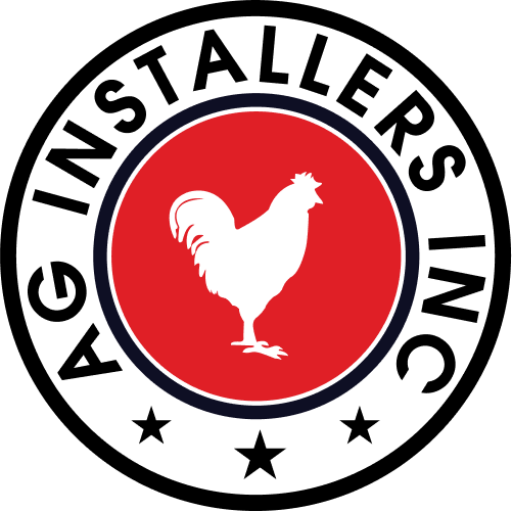Cracked Open: Connecting the Dots on HPAI
Imagine being a commercial egg producer today. You’re delivering millions of eggs each day, trying to honor long-term customer commitments while knowing that a single outbreak of HPAI could wipe out your entire flock overnight. You’re doing your best to maintain biosecurity, but even perfect protocol isn’t a guarantee. That’s what makes this topic so compelling. And so unsettling.
The Big Picture
HPAI (Highly Pathogenic Avian Influenza) isn’t just a health issue. It’s a market disruptor, a systems stressor, and a long-term industry vulnerability. When discussing egg markets, Brian Moscogiuri called it the ‘X factor’—an invisible threat that can undo even the most carefully built supply chain. And its recent economic impact has been large enough to draw national attention.
What’s Changing
Back in 2015, HPAI surged, then largely disappeared until the 2022 season. Now, it’s evolved. Recent waves have followed different patterns—moving from waterfowl to dairy, then back into egg production. 2024 marked the beginning of an unsettling trend as outbreaks persisted through dairy, instead of the typical seasonal patterns coinciding with waterfowl migrations. The virus has moved into other species, including humans.
What We’re Learning
We don’t know exactly how the disease spreads. As Dr. Kay Russo shared in “The Bird Flu Threat,” we lack clear epidemiological data, meaning we don’t fully know how HPAI spreads. She noted that a dime-sized fomite could be enough to knock out an entire flock—and even perfect biosecurity might not stop it. In our episode featuring the Agrinerds, Dr. Maurice Pitesky echoed these statements, noting the need to better trace what’s going on outside our farms and better access to data from within.
Vaccination seems to be the only viable tool available. In the March 28, 2025 Scramble episode, both Dr. Kay Russo and Jacques Klempf noted that the best tool we have is vaccination. Glenn Hickman backed this up, saying if there’s another practical solution, he doesn’t know of it. Joel Harris of Genvax noted that there are viable and scalable vaccine solutions available, but political barriers remain.
Trade dominates the bird flu vaccine conversation. It’s notable that the conversation surrounding HPAI vaccination doesn’t center around public health or animal welfare but instead centers on export risk. The broiler industry exports a large portion of its dark meat, and those exports could be blocked if trading partners fear that vaccine use masks infection. Dr. Russo noted that these risks can be managed through surveillance programs, as France has demonstrated. Glenn Hickman added that a vaccination program targeted solely at laying hens could preserve broiler exports while protecting egg supply. Ultimately, the outcome hinges on politics, as outlined in the following paragraph.
The USDA sits at the crux of any movement. The USDA oversees all animal agriculture, including eggs, broilers, and dairy. If dairy’s biosecurity standards are putting the egg industry at risk, the USDA is the entity best positioned to align those systems. In addition, the USDA is not only responsible for public and animal health but also for promoting U.S. agricultural exports. That dual role creates internal tension between health priorities, trade relationships, and the stability of the domestic egg supply. Vaccinating layer hens could, in theory, protect all three—but taking that path risks export backlash and requires political courage.
Greater effectiveness could require reckoning with the hidden costs of efficiency. After losing 6 million birds in three weeks, Glenn Hickman said he would have placed his farms farther apart if he could do it over. Cameron Whitehead of Pete & Gerry’s noted that their smaller flock sizes improve resilience across their supply chain. The tradeoff is cost. Pete & Gerry’s earns premium pricing for specialty eggs. Commodity egg producers, by contrast, must optimize for efficiency or risk losing out. Glenn emphasized that increased effectiveness will require investments that eventually need to be reflected in egg prices, which historically show a high degree of inelasticity.
Check out these episodes to learn more:
- “Glenn Hickman: Searching for a Path Forward After Losing 6 Million Birds”
- “The Scramble – Unfiltered Truths About Avian Influenza, Egg Prices & Vaccines”
- “The Bird Flu Threat with Dr. Kay Russo”
- “A Practical Look at Vaccines with Joel Harris of Genvax”
- “How a Bold Bet Saved Pete & Gerry’s with Cameron Whitehead”
In Conclusion
HPAI has caused devastation across the egg industry for several years. The only control producers have is biosecurity, an imperfect defense. As a result, they are left largely relying on luck, while millions of dollars are at stake and employees, flocks, and consumers are counting on them.
Looking ahead, the options seem limited: hope the virus fades, overhaul the supply chain and raise egg prices, or get meaningful help from the USDA in implementing a vaccination program. Of the three, implementing a vaccination program appears to be the only practical path forward.
What’s Next?
Join us on August 8 to hear how France successfully implemented an HPAI vaccine program, including navigating trade issues – Available for download by searching for Eggheads on Spotify or Apple Podcasts!
In addition, continue to follow along with Eggheads, as we navigate additional questions being raised by HPAI, such as:
- Is a vaccine a silver bullet—or a tool with tradeoffs? What can we learn from France?
- What’s the optimal flock-size calculus, balancing operational efficiency and cost with HPAI and other risks? What can be learned from specialty egg producers?
- Is the egg’s true value reflected in its market price? Can commodity producers find ways to raise prices to allow investment in resilience and best practices?
- Where do egg industry concerns stand in the eyes of the USDA?
Follow Eggheads on Spoitfy
![]()
Follow Eggheads on Apple Podcasts

